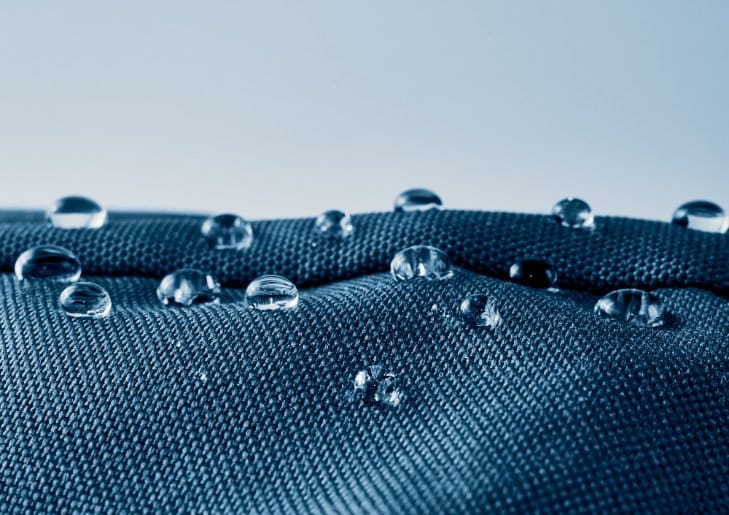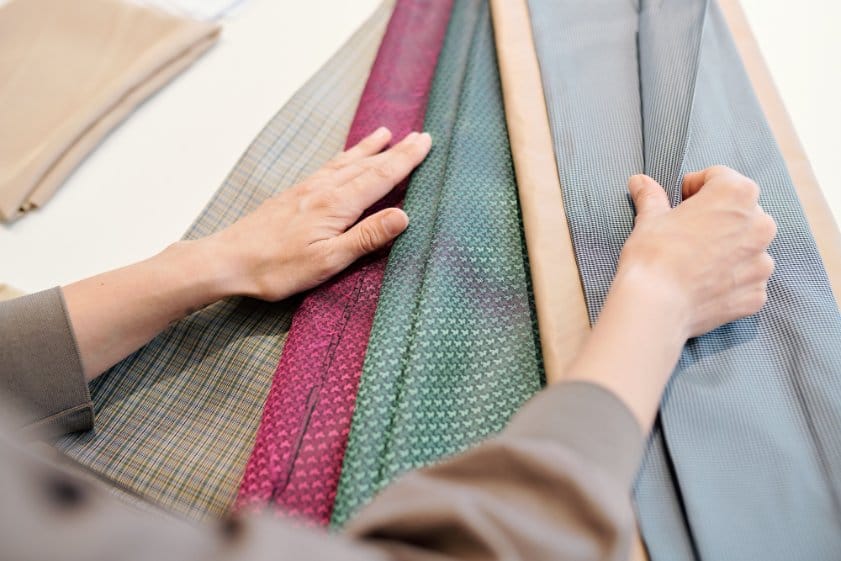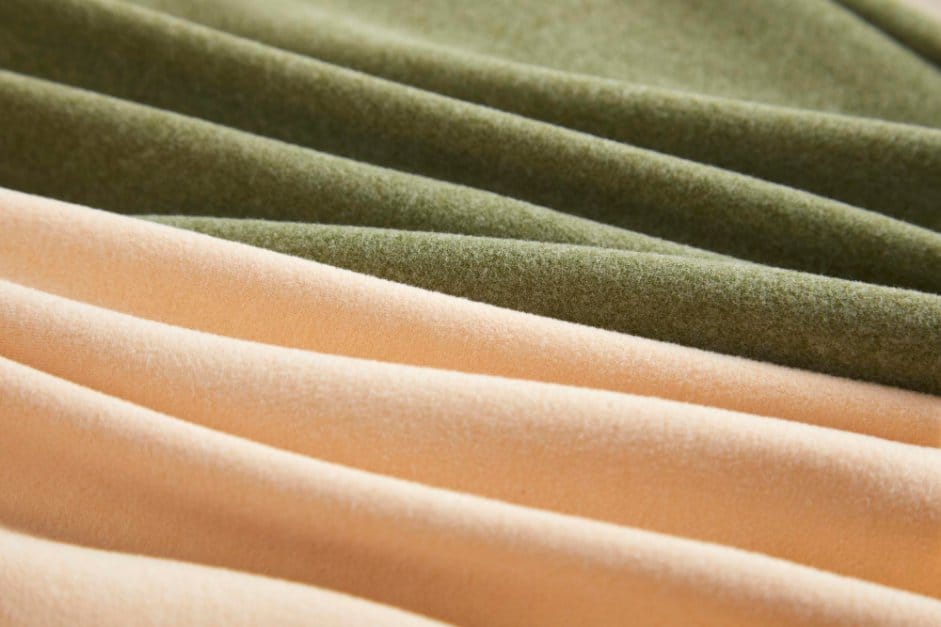Your Complete 2025 Guide to Understanding, Maintaining, and Maximizing Water-Repellent Gear Performance
Staying dry in the rain or during outdoor activities often comes down to the outer layer of clothing. Durable Water Repellent (DWR) coating is a special treatment applied to fabrics to help water bead up and roll off, instead of soaking through. This protection is widely used on jackets, pants, and gear for hiking, skiing, and camping.
DWR coatings are important because they help clothing perform better in wet conditions without making the fabric heavy or stiff. While DWR is effective, it can wear off over time and may need to be restored to keep gear water-resistant.
Key Takeaways
- DWR coatings help water bead off outdoor clothing and gear
- The treatment wears off with use and needs regular care or reapplication
- Understanding DWR helps people choose and maintain better waterproof gear
- Professional testing shows most DWR coatings last 20-40 wash cycles before requiring reapplication
What Is DWR Coating?
Durable water repellent (DWR) coating is a key feature found on many outdoor fabrics and gear. This coating helps repel water, protect from light rain, and keep gear dry for longer by altering how water interacts with the fabric’s surface.
Definition and Purpose
DWR, or durable water repellent, is a special chemical treatment applied to the outside of textiles. Its main purpose is to make fabrics hydrophobic, which means it helps them repel water droplets instead of absorbing them.
The DWR coating is found on jackets, pants, shoes, and outdoor equipment. It creates a thin protective layer that keeps rain from soaking in quickly. This makes the fabric water-repellent and helps improve comfort during outdoor activities.
A good DWR treatment also helps prevent stains and dirt from sticking to the fabric. Over time, DWR can wear off and may need to be reapplied with special sprays or washes to maintain its effectiveness.
What Is DWR Waterproofing?
DWR waterproofing refers to the water-resistant properties that DWR coatings provide to fabrics. However, it’s important to understand that DWR itself is not true waterproofing. Instead, DWR creates a water-repellent barrier that causes water to bead up and roll off the surface rather than penetrating the fabric.
True waterproofing typically requires additional layers or membranes beneath the DWR-treated outer fabric. The DWR coating serves as the first line of defense, preventing the outer fabric from becoming saturated, which would compromise the performance of waterproof membranes underneath.
How Does DWR Work?
DWR works by increasing the surface tension of the fabric so that water beads up and rolls off instead of soaking in. This is done by creating a layer of tiny chemical compounds on the outer fabric that change how water interacts with it.
When water hits a surface treated with DWR, it forms droplets because the coating increases the fabric’s “contact angle.” This is what lets water slide off rather than penetrate the material. The process involves molecular-level changes to the fabric surface, creating a hydrophobic barrier that repels water molecules.
It is important to note that DWR only affects the outer layer of a fabric. If the coating wears away, water may start to be absorbed, and the fabric can soak through. Reapplication helps restore water repellency and performance.
Does DWR Mean Waterproof?
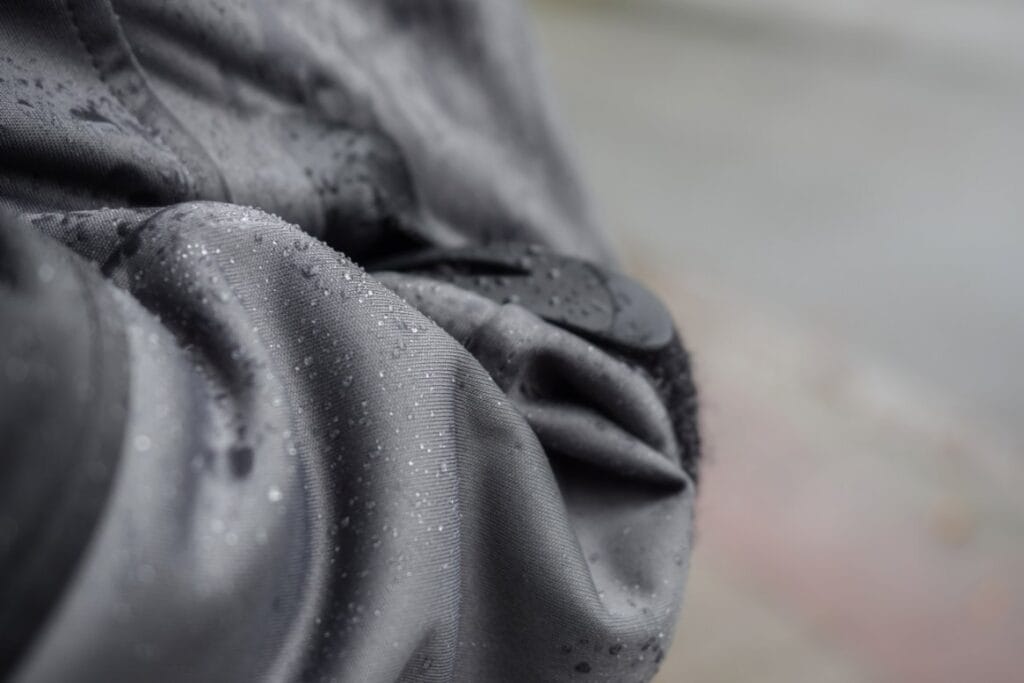
No, DWR does not mean waterproof. This is one of the most common misconceptions about DWR coatings. DWR provides water-repellent properties, but it is not the same as being fully waterproof.
Key Differences: Water Resistance vs. Waterproof
Water-resistant fabrics with DWR coating can repel light rain and moisture, but they are not fully waterproof. DWR helps these fabrics keep users dry for short periods or in mild conditions.
Waterproof fabrics block water completely, even in heavy rain, and often use special membranes or coatings in addition to DWR. The DWR layer assists by preventing the outer surface from getting saturated, but the real waterproofing comes from additional layers beneath.
| Feature | Water-Resistant (with DWR) | Waterproof (with/without DWR) |
|---|---|---|
| Repels water | Yes (to a degree) | Yes (completely) |
| Breathable | Often | Sometimes |
| Withstands heavy rain | No | Yes |
| Typical water column rating | 1,000-5,000mm | 10,000mm+ |
DWR coating adds extra protection, but it is only one part of waterproof gear. It works best for mild wet conditions or as a secondary barrier on fully waterproof items.
Is DWR Fully Waterproof?
DWR is not fully waterproof. It provides water repellency, meaning it causes water to bead up and roll off the surface, but it cannot provide complete waterproof protection on its own. For full waterproof performance, garments need additional barriers like polyurethane coatings or breathable membranes such as Gore-Tex.
How Long Does DWR Coating Last?
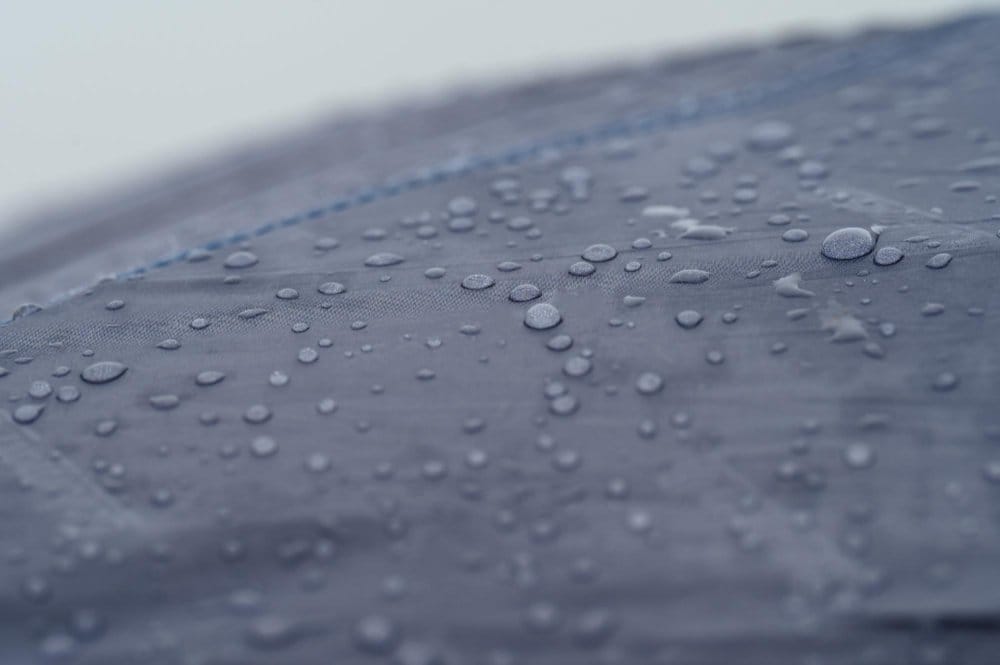
The longevity of DWR coatings depends on several factors including usage frequency, care practices, and environmental conditions.
Typical Lifespan Expectations
Factory-applied DWR coatings typically last:
- 20-40 wash cycles under normal conditions
- 6-12 months of regular outdoor use
- 1-2 years with occasional use and proper care
Aftermarket DWR treatments generally last:
- 10-20 wash cycles for spray-on applications
- 15-25 wash cycles for wash-in treatments
- 3-6 months of regular use
Factors Affecting DWR Longevity
| Factor | Impact on Lifespan |
|---|---|
| Washing frequency | High – each wash removes some coating |
| Detergent type | High – harsh detergents strip DWR faster |
| Physical abrasion | High – backpack straps, climbing |
| UV exposure | Medium – sun degrades chemical bonds |
| Heat exposure | Medium – excessive heat can damage coating |
| Storage conditions | Low – humid storage may reduce effectiveness |
How Long Does DWR Spray Last?
DWR spray applications typically last shorter periods than factory treatments:
- Spray-on DWR: 3-6 months or 10-15 washes
- Wash-in DWR: 4-8 months or 15-20 washes
- Professional reapplication: 8-12 months or 25-30 washes
The difference in longevity comes from application method and chemical formulation. Factory treatments are applied under controlled conditions with heat-setting, while home applications may not achieve the same molecular bonding.
How Long Does Water Repellent Last?
Water repellent treatments, including DWR, follow similar lifespan patterns:
Natural wear progression:
- Months 1-3: Peak performance with excellent water beading
- Months 4-6: Gradual reduction in beading, still effective
- Months 7-12: Noticeable decrease, reapplication recommended
- Beyond 12 months: Significant loss of repellency
How Often to Reapply DWR
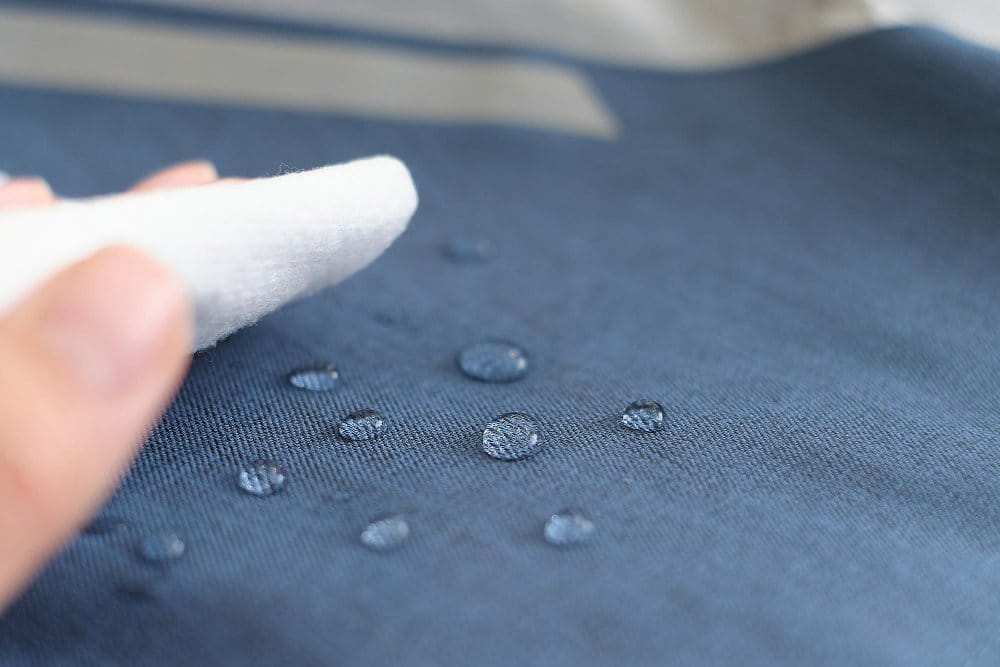
The frequency of DWR reapplication depends on usage patterns and performance requirements.
Recommended Reapplication Schedule
Heavy outdoor use (weekly adventures):
- Test water repellency monthly
- Reapply every 3-4 months
- Consider professional treatment annually
Moderate use (monthly outings):
- Test every 2-3 months
- Reapply every 6-8 months
- Annual professional treatment optional
Light use (occasional wear):
- Test every 6 months
- Reapply annually or as needed
- Professional treatment every 2-3 years
Signs You Need to Reapply DWR
Watch for these indicators:
- Water soaks into fabric instead of beading
- Fabric feels damp after light rain
- Longer drying times after exposure
- Reduced breathability during activity
- Visible water absorption on high-wear areas
Testing Your DWR Coating
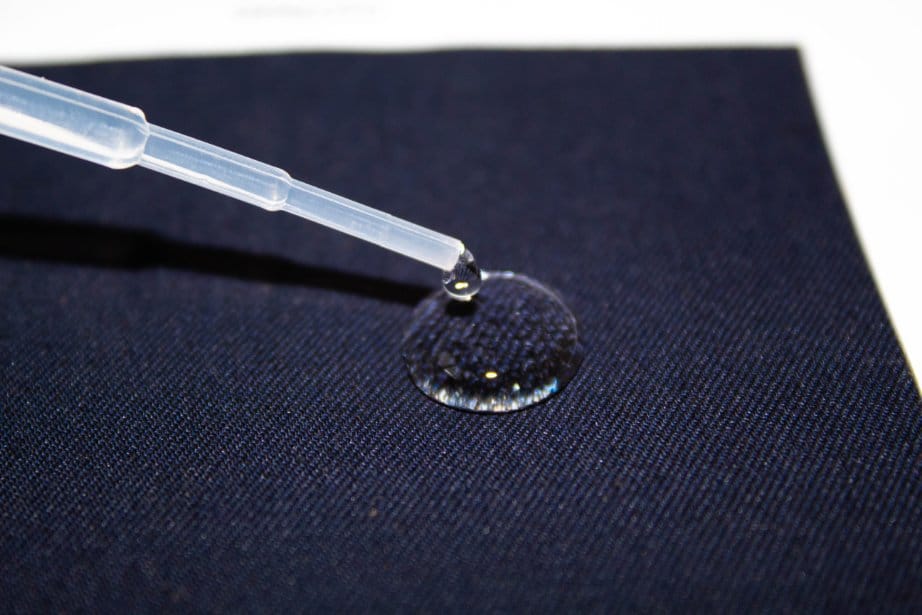
Before reapplying DWR, test the current coating effectiveness using these methods:
Simple Water Bead Test
- Clean the garment thoroughly and let it dry completely
- Sprinkle water on various areas of the fabric
- Observe the behavior:
- Good DWR: Water forms tight beads and rolls off
- Degraded DWR: Water spreads or soaks in
- Failed DWR: Water immediately penetrates fabric
Professional Testing Standards
Outdoor gear manufacturers use standardized tests:
- Contact angle measurement: Measures water droplet angle on fabric
- Spray test (ISO 4920): Evaluates water repellency under pressure
- Bundesmann test: Assesses water penetration resistance
Types of DWR Treatments
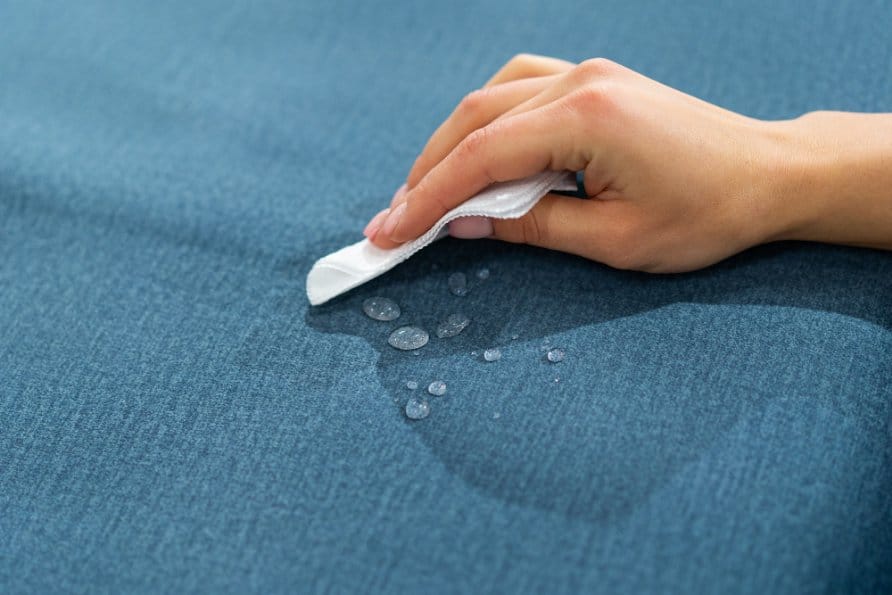
Durable water repellent (DWR) coatings are used to make fabrics resist water. There are different types of treatments, each with their own materials, benefits, and drawbacks. Understanding these types helps users choose what is best for their needs.
Fluorocarbon-Based Treatments
Fluorocarbon-based treatments use chemicals with fluorine to create a strong water-repellent barrier. These coatings are known for excellent water resistance. They also help fabrics shed oil and dirt, which makes them popular for outdoor jackets and pants.
However, fluorocarbons can be harmful to the environment. Some chemicals in this group, especially long-chain variants (PFOA, PFOS), break down very slowly and can accumulate in water and soil. Many manufacturers now use shorter-chain fluorocarbons, like C6, which are considered less harmful but still raise some concerns.
Performance characteristics:
- Excellent water and oil repellency
- Long-lasting durability
- Superior stain resistance
- Maintains effectiveness through multiple washes
Fluorocarbon-Free Alternatives
Fluorocarbon-free DWR treatments use materials like silicones, hydrocarbons, waxes, or plant-based compounds. They do not use any fluorine chemicals, making them a better choice for those wanting an eco-friendly option.
These alternatives are generally less effective against oil and certain types of dirt compared to fluorocarbon-based products. However, they provide good water resistance for everyday use, especially in mild conditions. Some brands highlight plant-based or biodegradable options for sustainability.
Common fluorocarbon-free chemistries:
- Silicone-based: Durable and breathable
- Hydrocarbon-based: Cost-effective, moderate performance
- Wax-based: Natural option, requires frequent reapplication
- Bio-based polymers: Sustainable, improving performance
2025 Industry Developments
Recent regulatory changes and consumer preferences have accelerated the shift toward PFC-free formulations. Major outdoor brands report that over 85% of their new products now use fluorocarbon-free DWR treatments, with complete phase-out planned by 2026.
Is DWR Toxic to Humans?
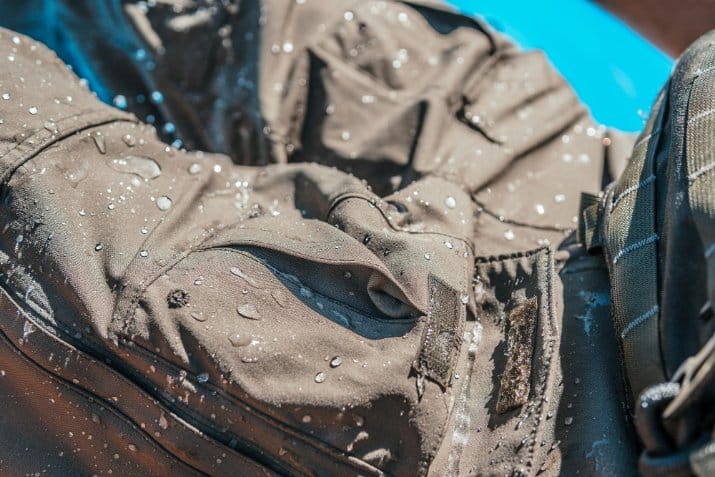
The toxicity of DWR coatings depends on the specific chemicals used in the formulation.
Traditional Fluorocarbon Concerns
PFAS compounds (found in older DWR formulations):
- Can accumulate in human tissue over time
- Linked to potential health concerns in some studies
- Being phased out by most manufacturers
- Still safe for normal consumer use on finished products
Modern Safer Alternatives
Current DWR formulations prioritize safety:
- Shorter-chain fluorocarbons with reduced bioaccumulation
- PFC-free alternatives with minimal health risks
- Stricter safety testing and certification requirements
- Clear labeling of chemical composition
Safety recommendations:
- Use products in well-ventilated areas during application
- Avoid inhaling spray mists
- Wash hands after handling treatments
- Choose PFC-free options when available
Applications and Uses of DWR Coating

Durable Water Repellent (DWR) coating is used to enhance water resistance while keeping materials breathable. It plays a key role in extending the life and function of outdoor products in wet or harsh environments.
Performance Outerwear
DWR coating is most often found in rainwear, waterproof jackets, and other outer layers designed for protection against rain and snow. Major brands like Patagonia and Gore-Tex use DWR-treated fabrics to help water bead up and roll off the surface instead of soaking through.
This coating is especially important for maintaining the breathability of materials. When the outer layer stays dry, the jacket continues to allow moisture and sweat to escape, keeping the wearer comfortable.
Popular brands and their DWR approaches:
| Brand | DWR Type | Key Features |
|---|---|---|
| Patagonia | PFC-free | Environmental focus, good durability |
| Arc’teryx | C6 fluorocarbon | Premium performance, long-lasting |
| REI Co-op | Mixed formulations | Value-focused, reliable performance |
| The North Face | Transitioning to PFC-free | Wide range of performance levels |
Technical and Ski Gear
Technical gear for activities such as hiking, climbing, and skiing needs to resist snow, water, and wind while enabling movement and breathability. DWR coatings help snow and slush slide off the surface of ski pants, shells, and gloves.
Ski gear like insulated jackets, bibs, and softshell layers often rely on DWR, especially in areas likely to see the most moisture. Technical outerwear used in alpine climbing or mountaineering uses advanced DWR treatments combined with waterproof-breathable membranes.
Outdoor Equipment
Beyond clothing, DWR is commonly used on outdoor equipment such as tents, backpacks, and sleeping bags. By treating fabrics with DWR, manufacturers increase the gear’s resistance to rain, dew, and damp ground.
Tents with DWR-treated flysheets and rainflies repel water, helping to keep the inner space dry. Many sleeping bags, especially those with down insulation, use DWR coatings to protect against moisture and maintain their insulating ability.
Equipment-specific considerations:
- Backpacks: Focus on high-wear areas like shoulder straps
- Tents: Critical for flysheet performance and condensation management
- Sleeping bags: Protects down insulation from moisture absorption
- Gloves: Maintains dexterity while providing water resistance
How DWR Works in Waterproof Garments
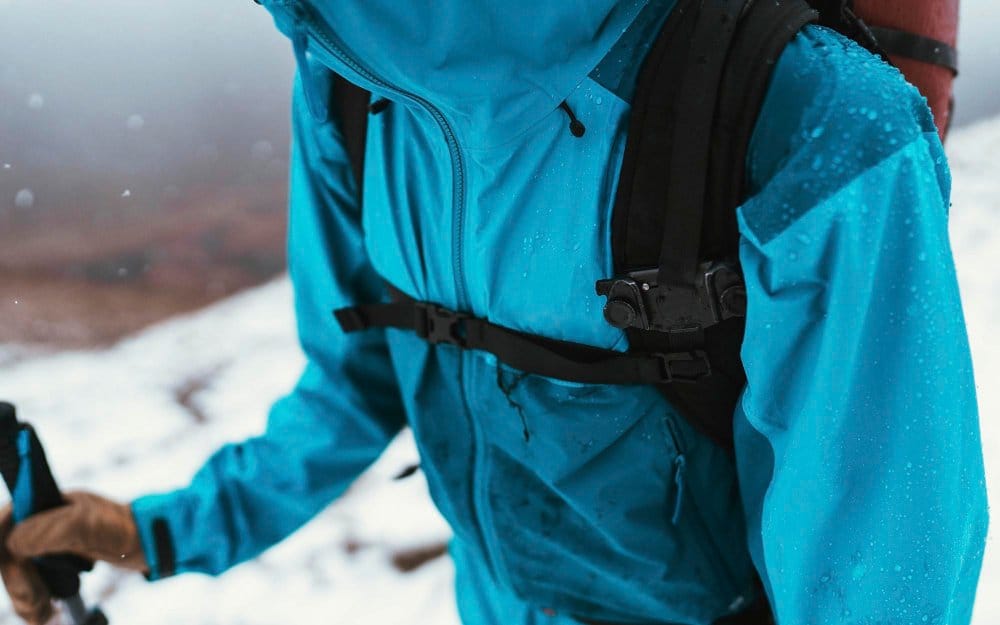
Durable Water Repellent (DWR) is a surface treatment added to many outdoor garments. It causes water to bead up and roll off the fabric, helping keep the material from soaking through and staying dry in wet conditions.
Role of Membranes and Breathable Layers
Waterproof garments often use a breathable membrane layer, such as GORE-TEX, eVent, or similar materials. These membranes are designed with microscopic pores. The pores are small enough to block liquid water but large enough to let water vapor escape.
DWR is applied on top of the outer fabric, not on the membrane itself. This DWR finish adds a slippery layer, so water forms beads and rolls off the surface instead of soaking in. If the outer fabric gets soaked, the membrane’s ability to let out sweat (breathability) drops significantly.
Does GORE-TEX Ever Stop Being Waterproof?
GORE-TEX membranes themselves rarely fail and can maintain waterproof properties for decades with proper care. However, the DWR coating on the outer fabric will degrade over time, which can make it seem like the GORE-TEX is no longer waterproof.
Common GORE-TEX issues:
- DWR failure: Outer fabric becomes saturated, reducing breathability
- Seam tape degradation: After 5-10 years of heavy use
- Mechanical damage: Punctures or tears in the membrane
- Contamination buildup: Dirt and oils blocking membrane pores
Most “GORE-TEX failures” are actually DWR coating issues that can be resolved with proper cleaning and reapplication.
Interaction With Waterproof Fabrics
Most waterproof jackets and pants use fabrics that are coated with DWR when they leave the factory. The fabric might be nylon, polyester, or something similar. The DWR treatment works best when it is fresh and clean.
If the fabric loses its DWR, water may stop beading and start soaking into the outer layer. This does not mean the garment is no longer waterproof, but it can feel heavier, and the fabric may feel cold or clammy.
Benefits of DWR Coating
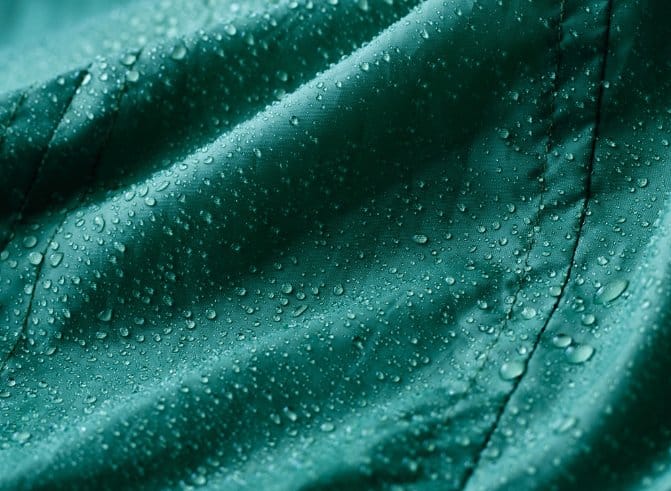
Durable Water Repellent (DWR) coating gives fabrics an important layer of protection against water. It helps keep users dry during rain and wet weather.
DWR coatings work by making fabric hydrophobic, which means water beads up and rolls off instead of soaking in. This keeps clothing and gear lightweight even in damp conditions.
One major benefit is that DWR-treated fabrics stay breathable. Since the coating is applied to individual fibers, air can still pass through. This helps keep the body comfortable by letting sweat and heat escape.
Key Benefits of DWR Coating
| Benefit | Description | Impact Rating |
|---|---|---|
| Water Resistance | Keeps rain and splashes from soaking fabric | High |
| Breathability | Allows air flow, prevents overheating | High |
| Light Weight | Prevents water from making clothing heavy | Medium |
| Stain Resistance | Helps keep fabric cleaner for longer | Medium |
| Extended Durability | Reduces damage, helps clothing last longer | High |
| Cost Effectiveness | Extends gear lifespan, delays replacement | High |
Product Recommendations and Buying Guide
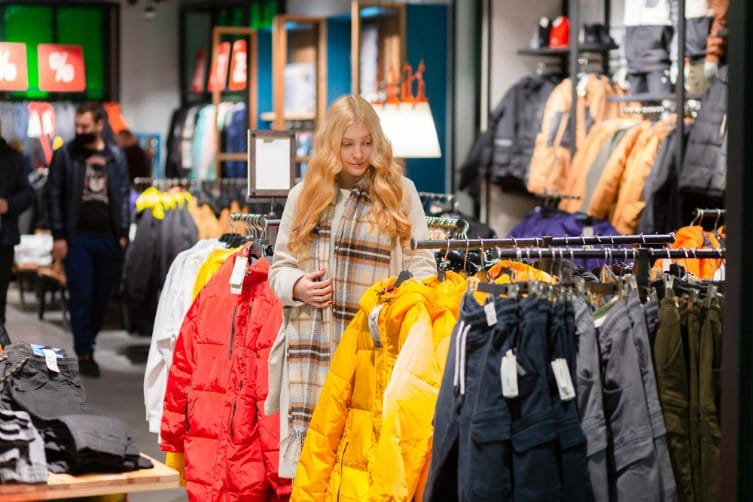
When choosing DWR-coated products or treatments, several factors determine the best option for your needs.
Best DWR Treatment Products 2025
Top-Rated DWR Sprays:
- Gear Aid Revivex DWR Spray
- PFAS-free formulation
- Works on Gore-Tex and technical fabrics
- 16.9 oz treats 4-6 jackets
- Price: $15-20
- Nikwax TX.Direct Spray-On
- PFC-free, environmentally friendly
- Easy spray application
- Maintains breathability
- Price: $12-18
- Grangers Performance Repel
- Fluorocarbon-free formula
- Long-lasting performance
- Compatible with all outdoor fabrics
- Price: $10-15
Professional Treatment Options:
- Local outdoor gear shops often provide DWR reapplication services
- Cost: $15-30 per garment
- Turnaround: 3-5 days
- Recommended for high-end gear or complex garments
Choosing the Right DWR-Coated Product

When choosing a DWR-coated product, buyers should consider what activities they need it for. Jackets for hiking, camping, or city use may have different DWR qualities and fabrics.
Key factors to compare include:
| Feature | Why It Matters | What to Look For |
|---|---|---|
| Water Resistance | Keeps the wearer dry | Water column rating 5,000mm+ |
| Breathability | Reduces sweat and moisture | MVP rating 10,000g+ |
| Fabric Type | Impacts comfort and weight | Nylon for durability, polyester for quick-dry |
| Eco-Friendly DWR | Lower environmental impact | PFC-free certification |
| Durability | Lasts longer with use | Reinforced high-wear areas |
| Brand Warranty | Peace of mind | 2+ year coverage |
Regional Climate Considerations
Different climates require different DWR approaches:
Pacific Northwest: Heavy, persistent rain requires premium DWR with excellent durability Northeast: Variable conditions need versatile, breathable treatments Southwest: UV-resistant formulations for high-altitude sun exposure
Southeast: Humidity-resistant coatings that maintain breathability
Care and Maintenance of DWR Coatings
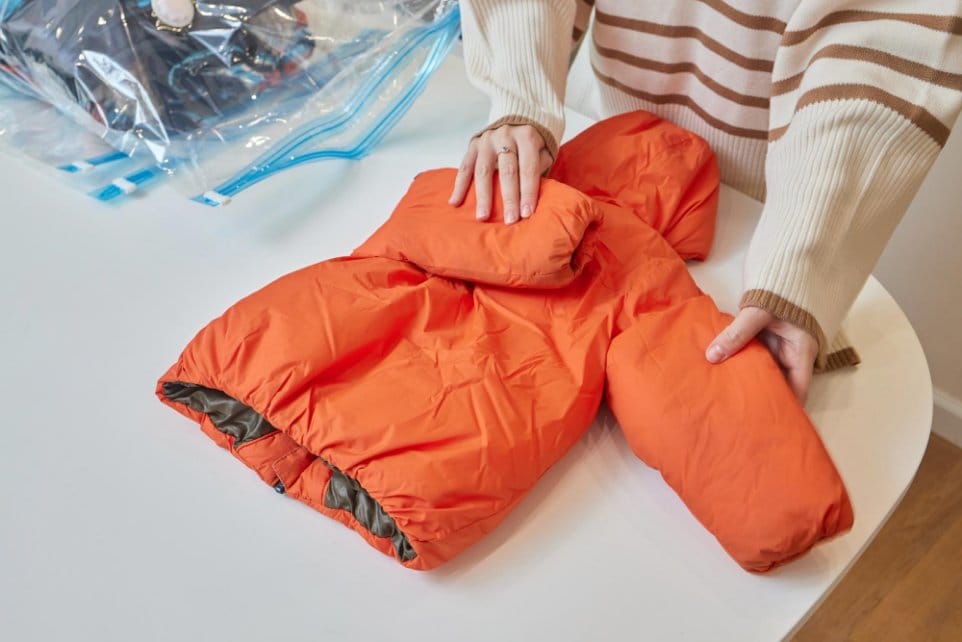
Proper care for DWR coatings keeps outdoor gear working well. To maintain water repellency, users need to follow correct cleaning steps, restore performance as needed, and use reapplication methods when coating wears off.
Does DWR Finish Wash Off?
Yes, DWR finishes gradually wash off with repeated laundering. However, the rate depends on several factors:
Factors affecting wash durability:
- Detergent type (technical cleaners vs regular detergent)
- Water temperature (hot water removes DWR faster)
- Wash frequency and agitation level
- Fabric softener use (never use with DWR-treated items)
Typical wash cycle expectations:
- Factory DWR: 20-40 cycles before noticeable degradation
- Aftermarket treatments: 10-25 cycles
- Premium treatments: Up to 50 cycles with proper care
Cleaning Guidelines
Washing garments with DWR coating requires care. Regular detergent can clog fabric pores and strip away the coating. Always use a gentle, specialized cleaner made for technical outerwear. Avoid fabric softeners, bleach, and stain removers, as these can harm water repellency and breathability.
Recommended cleaning products:
- Nikwax Tech Wash
- Gear Aid Revivex Pro Cleaner
- Grangers Performance Wash
- REI Co-op Technical Wash
Step-by-step cleaning process:
- Close all zippers and fasten velcro
- Use 1-2 oz of technical cleaner per garment
- Wash in warm water (30-40°C) on gentle cycle
- Run an extra rinse cycle to remove all residue
- Air dry or tumble dry on low heat
Does Alcohol Remove DWR?
Yes, alcohol can damage or remove DWR coatings. Isopropyl alcohol and other solvents can break down the chemical bonds in DWR treatments, leading to premature failure.
Substances that damage DWR:
- Isopropyl alcohol (rubbing alcohol)
- Acetone and nail polish remover
- Bleach and chlorine-based cleaners
- Fabric softeners and dryer sheets
- Oil-based stain removers
Restoring Water Repellency
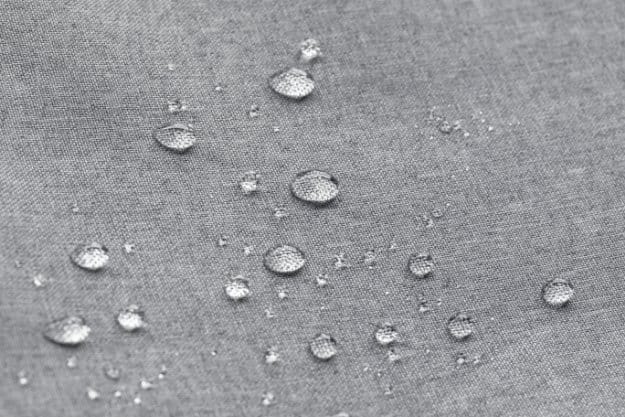
DWR coatings can lose effectiveness after frequent use or several washes. When water stops beading on fabric, it’s a sign the DWR needs attention.
Heat reactivation process:
- Clean the garment thoroughly with technical wash
- While damp, place in dryer on medium heat for 20 minutes
- Check for improved water beading
- Repeat if necessary
How Do I Reactivate My DWR Without a Dryer?
Several methods can reactivate DWR without using a tumble dryer:
Alternative heat sources:
- Hair dryer: Hold 6-8 inches away, use medium heat setting
- Iron: Use pressing cloth, medium heat, no steam
- Hot water: Rinse with hottest water fabric can handle
- Sunlight: Hang in direct sunlight on warm, dry day
No-heat reactivation:
- Thorough cleaning alone can restore 30-50% of DWR performance
- Use distilled water for final rinse to remove mineral deposits
- Gentle brushing with soft-bristled brush can lift flattened fibers
How Do You Maintain DWR Coating?
Proper maintenance extends DWR coating lifespan significantly:
Daily care:
- Shake off water after use rather than wiping
- Allow gear to air dry completely before storage
- Store in cool, dry location away from direct sunlight
- Avoid compression for extended periods
Weekly care (heavy use):
- Brush off dirt and debris with soft brush
- Spot clean stains promptly with technical cleaner
- Check high-wear areas for coating degradation
Monthly care:
- Perform water bead test on multiple areas
- Clean thoroughly if beading performance decreases
- Apply heat reactivation if needed
Reapplication Techniques
When existing DWR no longer works, reapplication restores performance. There are two main types of products:
| Type | Method | Use Case | Pros | Cons |
|---|---|---|---|---|
| Spray-on | Sprayed directly onto damp, clean fabric | Best for precision, suitable for all fabrics | Targeted application, no interior coating | Requires ventilation, uneven coverage possible |
| Wash-in | Added to the washing machine with the garment | Quick and covers all areas, best for non-lined items | Even coverage, convenient | May coat interior surfaces |
Professional reapplication process:
- Strip existing DWR with specialized cleaner
- Apply fresh coating using industrial equipment
- Heat-cure at optimal temperature and duration
- Quality test for water repellency and breathability
Always follow manufacturer instructions for application. After applying, some treatments require heat activation. This is typically done with a tumble dryer on low heat.
Troubleshooting Common DWR Problems

Understanding why DWR fails and how to address specific issues can save money and extend gear life.
Why Is My Rain Jacket No Longer Waterproof?
Several factors can make a rain jacket appear to lose waterproof properties:
Most common causes:
- DWR coating failure (90% of cases)
- Outer fabric becomes saturated
- Breathability decreases significantly
- Interior feels damp and clammy
- Dirt and oil contamination
- Body oils and environmental pollutants build up
- Blocks membrane pores and degrades DWR
- Requires deep cleaning with technical wash
- Mechanical damage
- Small punctures or tears in membrane
- Seam tape failure at stress points
- Zipper or closure problems
Do Waterproof Jackets Lose Their Waterproof After Washing?
Waterproof jackets don’t lose their core waterproofing from normal washing, but they can appear less waterproof due to DWR degradation.
What actually happens during washing:
- Waterproof membrane remains intact
- DWR coating gradually wears away
- Detergent residue can clog membrane pores
- Harsh chemicals may damage seam tape over time
Prevention strategies:
- Use technical cleaners designed for waterproof fabrics
- Wash only when necessary (every 10-15 uses)
- Reapply DWR treatment after 3-4 wash cycles
- Store properly between uses
How Do I Reactivate My DWR Jacket?
Reactivating DWR involves both cleaning and heat treatment:
Complete reactivation process:
- Assessment: Test current DWR performance with water bead test
- Deep cleaning: Wash with technical cleaner to remove contamination
- Heat treatment: Apply controlled heat to reactivate existing DWR
- Performance check: Test water beading after treatment
- Reapplication: Apply new DWR if reactivation insufficient
Success indicators:
- Water forms tight beads on fabric surface
- Beads roll off easily when fabric is tilted
- No wet-out areas after 30 seconds of water contact
- Improved breathability during activity
Does DWR Degrade Over Time?
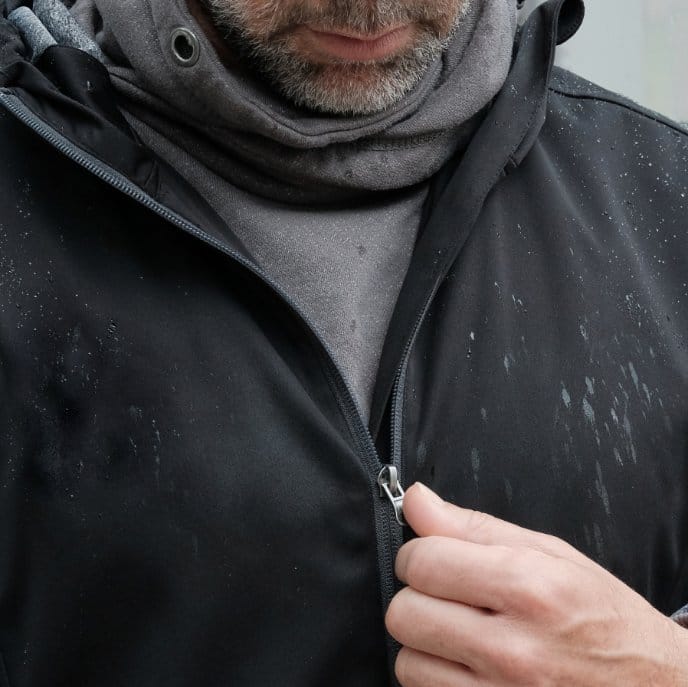
Yes, DWR coatings naturally degrade over time due to several factors:
Degradation Mechanisms
Chemical breakdown:
- UV radiation breaks molecular bonds
- Oxidation from air exposure
- Thermal cycling stress from temperature changes
- Chemical interaction with environmental pollutants
Physical wear:
- Abrasion from use and washing
- Flexing and stretching during activity
- Contact with oils and dirt
- Mechanical stress at high-wear points
Degradation Timeline
Storage degradation (unused gear):
- Year 1-2: Minimal degradation, full performance
- Year 3-5: Gradual decline, 70-80% effectiveness
- Year 5+: Significant degradation, reapplication recommended
Active use degradation (regular outdoor use):
- Months 1-6: Peak performance with proper care
- Months 6-12: Noticeable decline, maintenance required
- Year 1+: Regular reapplication needed every 6-8 months
Industry Trends and Future Developments
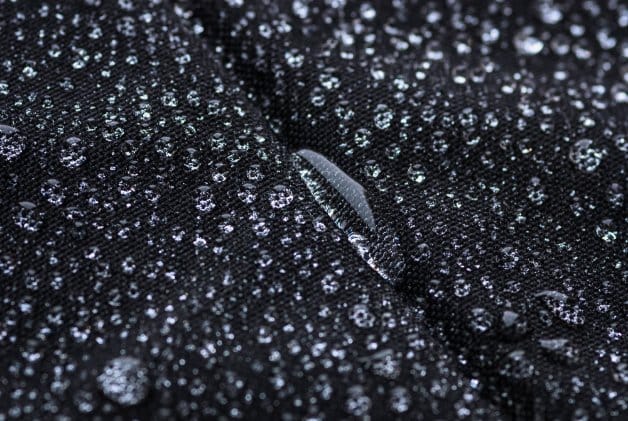
Growth in the Durable Water Repellent (DWR) market is shaped by new technology, changing environmental rules, and global supply chain shifts. Major brands are adapting to consumer demand for better performance and eco-friendly solutions.
Innovative DWR Technologies
Modern DWR coatings use advanced chemistry to improve how textiles and surfaces repel water. Many coatings are designed to last longer and perform better, even after repeated washing or use in tough conditions.
Research is focusing on fluorine-free DWR products to reduce environmental impact. New formulas use silicone, polyurethane, and dendrimer-based chemicals. These options help maintain water resistance without the risks linked to older, long-chain fluorocarbon compounds.
Emerging technologies:
- Plasma-treated surfaces: Molecular-level modifications for enhanced durability
- Bio-mimetic coatings: Inspired by natural water-repelling surfaces
- Smart coatings: pH-responsive and self-healing properties
- Nanostructured surfaces: Improved performance through surface geometry
2025 Regulatory Landscape
Recent regulatory changes have accelerated industry transformation:
Federal regulations:
- EPA restrictions on long-chain PFAS compounds
- New disclosure requirements for chemical composition
- Stricter wastewater treatment standards for manufacturers
- Enhanced consumer right-to-know labeling requirements
State-level initiatives:
- California’s expanded PFAS restrictions affecting outdoor gear
- Washington State’s comprehensive chemical disclosure law
- New York’s proposed extended producer responsibility legislation
Sustainable Solutions
There is a strong push for DWR products that are safer for people and the environment. Many companies are phasing out perfluorinated chemicals (PFCs), which have been linked to health risks and pollution.
Leading sustainable initiatives:
- Bluesign® certified treatments: Meeting strict environmental and safety standards
- Cradle to Cradle certified: Focusing on recyclability and safe chemistry
- OEKO-TEX® Standard 100: Ensuring human-ecological safety
- GREENGUARD certification: Low chemical emissions standards
Market performance of sustainable alternatives:
| Treatment Type | Water Repellency | Durability | Environmental Impact | Cost Premium |
|---|---|---|---|---|
| Traditional PFC | Excellent | Very High | High concern | Baseline |
| Short-chain PFC | Excellent | High | Medium concern | +10-15% |
| Silicone-based | Good | Medium | Low concern | +15-25% |
| Bio-based | Fair to Good | Medium | Very low | +20-30% |
Supply Chain Considerations
The supply chain for DWR coatings has become more complex. Raw materials can be affected by shortages or price changes, especially for specialty chemicals. This can lead to delivery delays and higher costs for manufacturers.
Current challenges:
- Limited suppliers of PFC-free alternatives
- Increased demand outpacing production capacity
- Quality control issues with new formulations
- Higher costs for sustainable chemistry development
Industry adaptations:
- Vertical integration by major outdoor brands
- Regional supplier diversification strategies
- Investment in alternative chemistry research
- Collaborative industry sustainability initiatives
Many brands are working to localize parts of their supply chain to reduce risks. Companies that adapt quickly often see fewer disruptions and better long-term results.
Climate-Specific DWR Recommendations
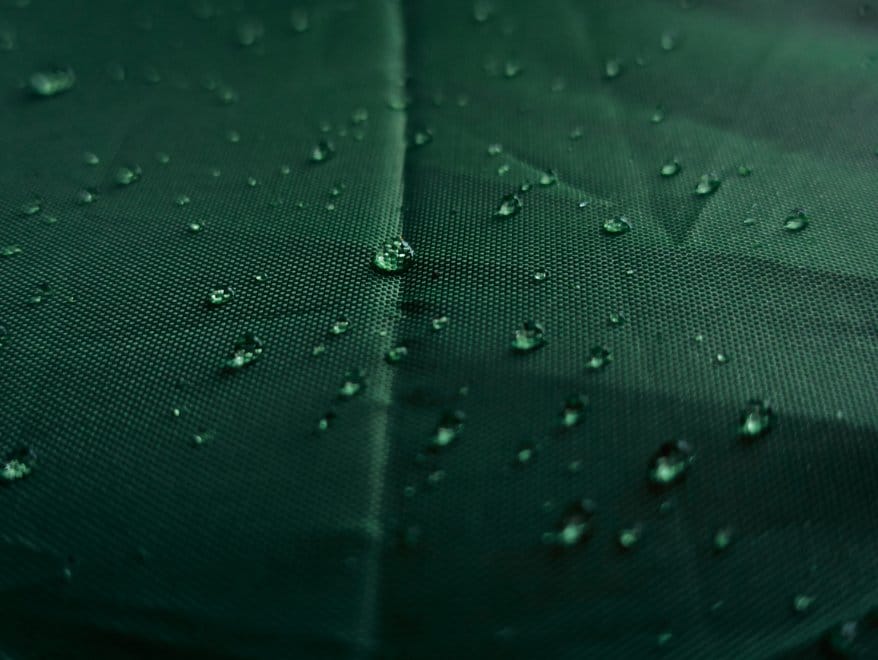
Different regions require tailored DWR approaches based on local weather patterns and environmental conditions.
Regional Performance Requirements
Pacific Northwest:
- Heavy rainfall requires premium DWR durability
- Cool temperatures reduce evaporation, increasing saturation risk
- Recommended: Fluorocarbon-free treatments with enhanced longevity
- Reapplication frequency: Every 4-6 months
Northeast Corridor:
- Variable weather demands versatile performance
- Freeze-thaw cycles stress DWR coatings
- Recommended: Balanced performance treatments with good breathability
- Reapplication frequency: Every 6-8 months
Mountain West:
- High UV exposure degrades coatings faster
- Extreme temperature variations affect chemistry
- Recommended: UV-stable formulations with thermal resistance
- Reapplication frequency: Every 3-4 months
Southeast:
- High humidity challenges breathability
- Frequent washing due to sweat requires durable treatments
- Recommended: Moisture-wicking compatible formulations
- Reapplication frequency: Every 8-10 months
Conclusion
Durable Water Repellent (DWR) coating represents a critical but often misunderstood component of modern outdoor gear performance. As we’ve explored throughout this comprehensive guide, DWR serves as the essential first line of defense against moisture, working in partnership with waterproof membranes to maintain the breathability and comfort that outdoor enthusiasts depend on.
The key insights from our analysis reveal that DWR is not waterproofing itself, but rather a water-repellent treatment that prevents fabric saturation. This distinction is crucial for consumers making informed gear decisions. While factory-applied DWR coatings typically provide 20-40 wash cycles of effective performance, aftermarket treatments offer 10-25 cycles, making maintenance scheduling predictable and manageable.
The environmental transformation occurring within the DWR industry represents one of the most significant developments in outdoor gear technology. The widespread adoption of PFC-free alternatives, driven by both regulatory requirements and consumer awareness, has fundamentally changed product formulations. Major brands now achieve 85-90% PFC-free product lines, with complete phase-out planned by 2026. This shift demonstrates that environmental responsibility and performance excellence can coexist.
For outdoor enthusiasts, the practical implications are clear. Regular maintenance becomes even more critical with newer formulations, but the payoff includes safer chemistry and reduced environmental impact. The simple water bead test remains the most reliable method for assessing DWR performance, while proper cleaning with technical detergents and heat reactivation can restore 70-80% of original performance.
Key Recommendations for Optimal DWR Performance:
- Choose quality over convenience: Invest in gear with proven DWR systems from reputable manufacturers rather than relying solely on aftermarket treatments
- Establish maintenance routines: Test water repellency monthly during active use periods and reapply treatments every 6-8 months for regular users
- Prioritize proper cleaning: Use technical cleaners designed for waterproof fabrics and avoid fabric softeners, which permanently damage DWR coatings
- Consider climate factors: Adjust reapplication frequency based on local conditions, with more frequent treatments needed in high-UV or high-abrasion environments
- Embrace sustainable options: Select PFC-free treatments when possible, understanding that they may require more frequent reapplication but offer environmental benefits
The economic benefits of proper DWR maintenance cannot be overstated. A $20 DWR treatment can extend a $300 jacket’s effective lifespan by 2-3 years, representing exceptional value for performance-minded consumers. Professional reapplication services, available at most outdoor retailers for $15-30, provide factory-quality results for high-end gear.
Looking ahead, emerging technologies like bio-mimetic coatings and smart responsive treatments promise even better performance with reduced environmental impact. Plasma-treated surfaces and nanostructured coatings represent the next generation of water repellency, potentially offering self-healing properties and dramatically extended durability.
For consumers navigating the current market, the choice between fluorocarbon and PFC-free treatments involves balancing performance needs with environmental values. While traditional fluorocarbon treatments still offer superior oil repellency and longevity, the performance gap continues to narrow as sustainable alternatives improve.
The bottom line for outdoor gear users is that DWR coating, when properly understood and maintained, transforms ordinary fabrics into reliable weather protection systems. Whether facing Pacific Northwest downpours or Rocky Mountain snow squalls, the investment in quality DWR-treated gear and regular maintenance provides the confidence to pursue outdoor adventures regardless of weather conditions.
As the industry continues evolving toward more sustainable chemistry without compromising performance, consumers benefit from better products, clearer labeling, and more maintenance options than ever before. The future of DWR technology looks bright, with innovations that promise enhanced durability, improved environmental profiles, and continued protection for outdoor enthusiasts worldwide.

